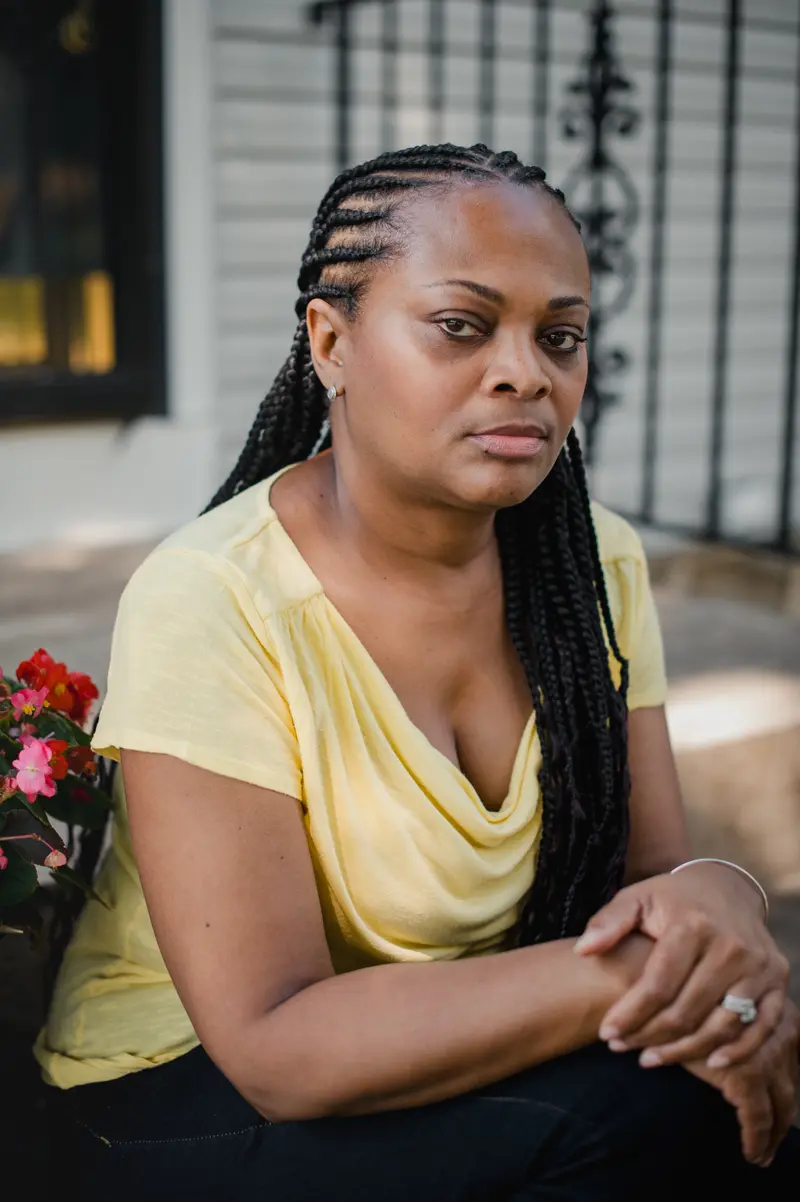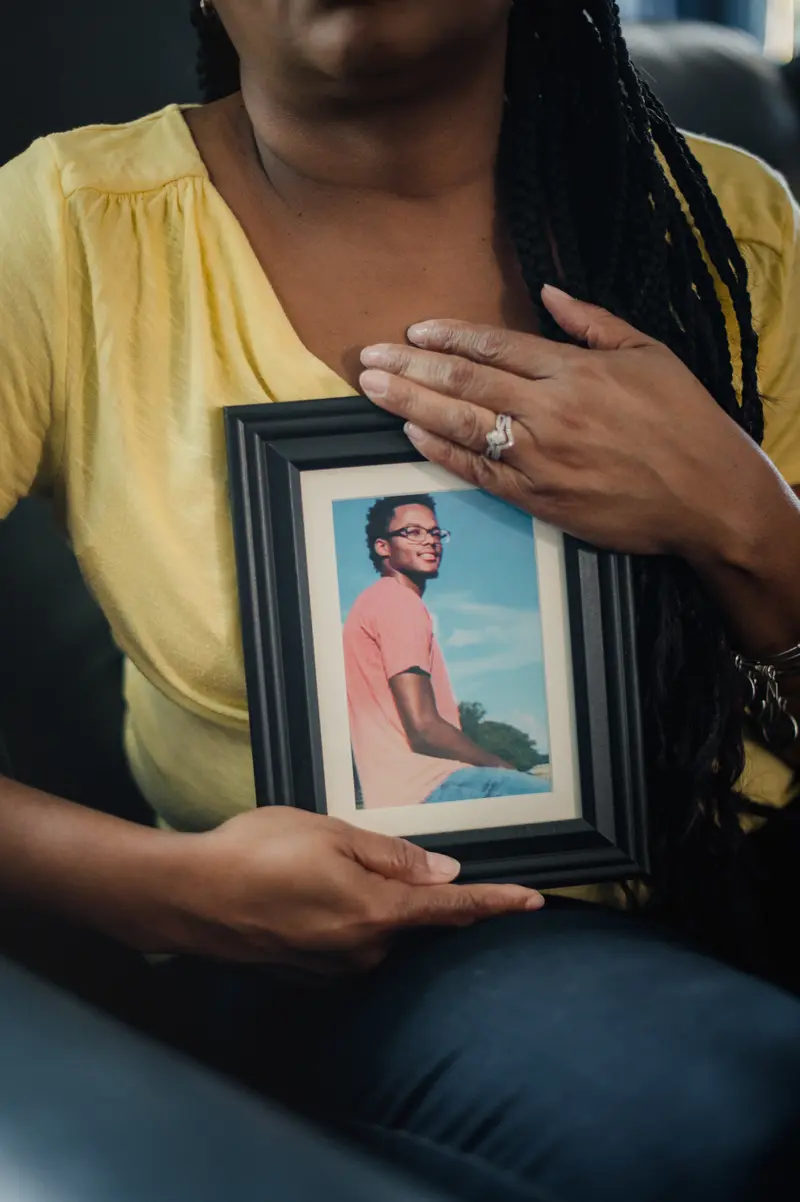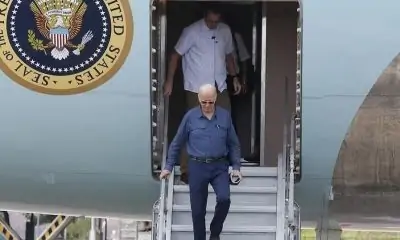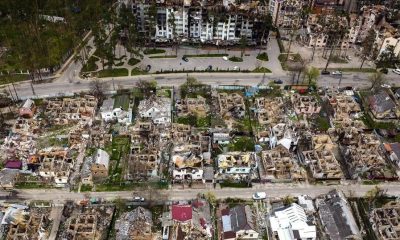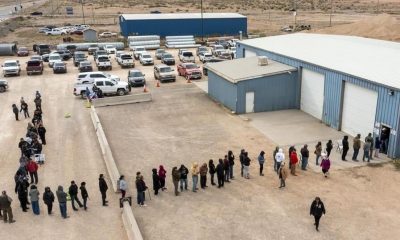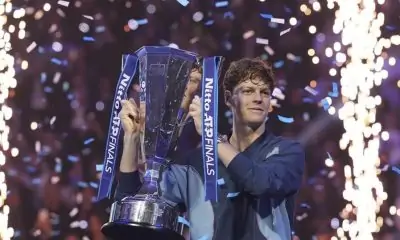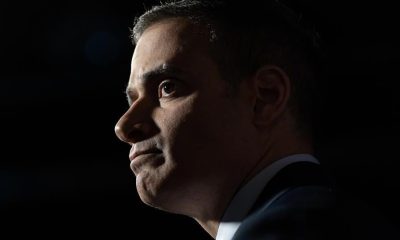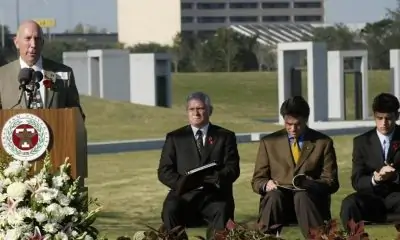This story is exempt from our Creative Commons license until Dec. 2, 2023.
Media
Social Media Could Be Contributing to More Violence Among Young People
One fall evening in 2020, Jarell Jackson and Shahjahan McCaskill were chatting in Jackson’s Hyundai Sonata, still on a post-vacation high, when 24 bullets ripped through the car. The two men, both 26, had been close friends since preschool. They’d just returned to West Philadelphia after a few days hang gliding, zip lining and hiking in Puerto Rico. Jackson was parked outside his mom’s house when a black SUV pulled up and the people inside started shooting. Both he and McCaskill were pronounced dead at the hospital.
In the aftermath, McCaskill’s mother, Najila Zainab Ali McCaskill, couldn’t fathom why anyone would want to kill her son and his friend. Both had beaten the odds for young Black men in their neighborhood and graduated from college. Jackson had been a mental health technician in an adolescent psych ward while her son had run a small cleaning business and tended bar. She wondered if they’d been targeted by a disgruntled former employee of the cleaning business. But then the police explained: Her son and his friend had been killed because of a clash on social media among some teenagers they’d never even met.
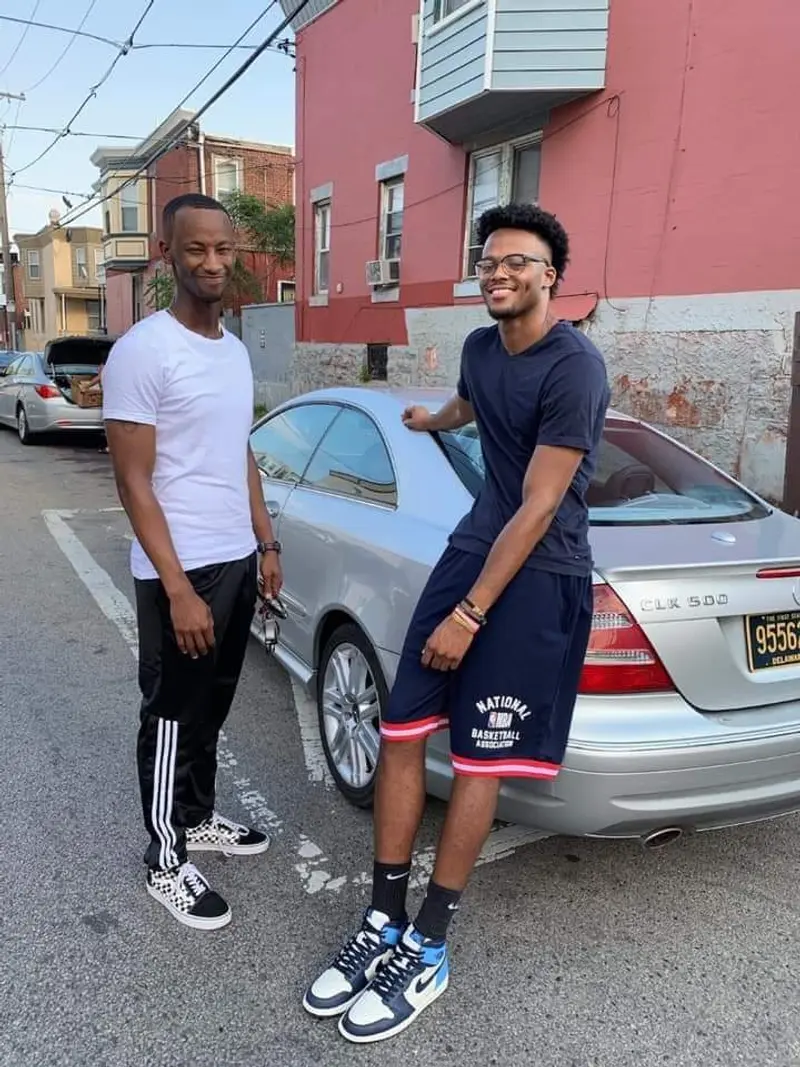
Credit:
Courtesy of Monique Jackson
For months, a battle had been raging on Instagram between crews based on either side of Market Street. Theirs was a long-running rivalry, but a barrage of online taunts and threats had raised tensions in the neighborhood. Police had assigned an officer to monitor the social media activity of various crews in the city, and the department suspected that the Northsiders in the SUV had mistaken one of the two friends for a rival Southsider and opened fire. An hour after the shooting, a Northsider posted a photo on Instagram with a caption that appeared to mock the victims and encourage the rival crew to collect their bodies: “AHH HAAAA Pussy Pick Em Up!!”
Jackson and McCaskill died in the first year of a nationwide resurgence in violence that has erased more than two decades of gains in public safety. In 2020, homicides spiked by 30% and fluctuated around that level for the next two years. There are early signs that the 2023 rate could show a decrease of more than 10% from last year, but that would still leave it well above pre-pandemic levels.
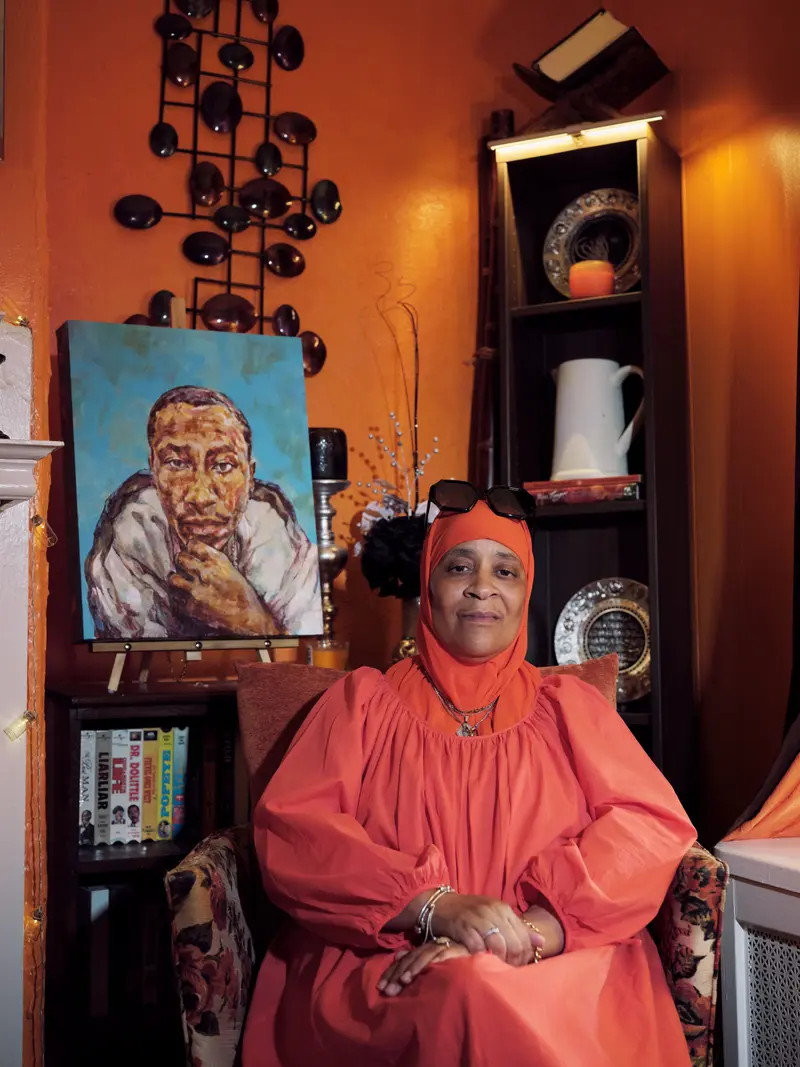
Credit:
Hannah Price, special to ProPublica
Criminologists point to a confluence of factors, including the social disruptions caused by COVID‑19, the rise in gun sales early in the pandemic and the uproar following the murder of George Floyd, which, in many cities, led to diminished police activity and further erosion of trust in the police. But in my reporting on the surge, I kept hearing about another accelerant: social media.
Violence prevention workers described feuds that started on Instagram, Snapchat and other platforms and erupted into real life with terrifying speed. “When I was young and I would get into an argument with somebody at school, the only people who knew about it were me and the people at school,” said James Timpson, a violence prevention worker in Baltimore. “Not right now. Five hundred people know about it before you even leave school. And then you got this big war going on.”
Smartphones and social platforms existed long before the homicide spike; they are obviously not its singular cause. But considering the recent past, it’s not hard to see why social media might be a newly potent driver of violence. When the pandemic led officials to close civic hubs such as schools, libraries and rec centers for more than a year, people — especially young people — were pushed even further into virtual space. Much has been said about the possible links between heavy social media use and mental health problems and suicide among teenagers. Now Timpson and other violence prevention workers are carrying that concern to the logical next step. If social media plays a role in the rising tendency of young people to harm themselves, could it also be playing a role when they harm others?
The current spike in violence isn’t a return to ’90s-era murder rates — it’s something else entirely. In many cities, the violence has been especially concentrated among the young. The nationwide homicide rate for 15- to 19-year-olds increased by an astonishing 91% from 2014 to 2021. Last year in Washington, D.C., 105 people under 18 were shot —nearly twice as many as in the previous year. In Philadelphia in the first nine months of 2022, the tally of youth shooting victims — 181 — equaled the tally for all of 2015 and 2016 combined. And in Baltimore, more than 60 children ages 13 to 18 were shot in the first half of this year. That’s double the totals for the first half of each year from 2015 to 2021 — and it has occurred while overall homicides in the city declined. Nationwide, this trend has been racially disproportionate to an extreme degree: In 2021, Black people ages 10 to 24 were almost 14 times more likely to be the victims of a homicide than young white people.
Those confronting this scourge — police, prosecutors, intervention workers — are adamant that social media instigation helps explain why today’s young people are making up a larger share of the victims. But they’re at a loss as to how to combat this phenomenon. They understand that this new wave of killing demands new solutions — but what are they?
To the extent that online incitement has drawn attention, it’s been focused on rap videos, particularly those featuring drill music, which started in Chicago in the early 2010s and is dominated by explicit baiting of “opps,” or rivals. These videos have been linked to numerous shootings. Often, though, conflict is sparked by more mundane online activity. Teens bait rivals in Instagram posts or are goaded by allies in private chats. On Instagram and Facebook, they livestream incursions into enemy territory and are met by challenges to “drop a pin” — to reveal their location or be deemed a coward. They brandish guns in Snapchat photos or YouTube and TikTok videos, which might provoke an opp to respond — and pressure the person with the gun to actually use it.
In December, I met 21-year-old Brandon Olivieri at the state prison in Houtzdale, Pennsylvania, where he is serving time for murder. In 2017, Olivieri said, he had a run-in with other teens in South Philadelphia after he tried to sell marijuana on their turf. Later, in a private Instagram chat for Olivieri and his friends, someone posted a picture of a silver .45-caliber pistol. Then another member, Nicholas Torelli, posted a picture of cat feces on the sidewalk, with the caption “Brandon took a shit on opp territory.” It was a joke, but the conversation quickly turned aggressive. Later that day, Olivieri asked Torelli to drop an image of their opponents into the chat, so everyone could see what they looked like. Torelli complied, and, according to court records, Olivieri replied that he would “pop all of them.”
When Olivieri, Torelli and two friends encountered four of their opponents later that month, there were heated words, a struggle and three gunshots from the silver pistol. One bullet struck Caleer Miller, a member of Olivieri’s group. Another hit Salvatore DiNubile, in the other crew. Both died; they were 16. Olivieri was convicted of first-degree murder in DiNubile’s death and third-degree murder in Miller’s. (Torelli testified against Olivieri and was not charged.) Olivieri was sentenced to 37 years to life.
DiNubile’s father, also named Salvatore, believes the ability to share threats online encouraged Olivieri and his friends to make them; having made them, they felt compelled to follow through. “You said you were gonna do this guy. Here’s your chance,” he told me. “You try to live up to this gangster mentality that he’s self-created.” Olivieri maintains his innocence and says that he wasn’t the one who fired the fatal shots, but he agreed that he and his friends often hyped one another up by making boasts online. “It’s what we call pump-faking,” he explained.
Last year, as the number of juvenile shooting victims in Washington, D.C., climbed toward triple digits, the city’s Peace Academy, which trains community members in violence prevention, held a Zoom session dedicated to social media. Ameen Beale of the D.C. Attorney General’s Office shared his screen to display a sequence typical of online flare-ups culminating in a fatality.
The presentation started with a photo, posted to Instagram in 2019, showing the local rapper AhkDaClicka on the Metro; the caption mocked him for being caught there, without a gun, by adversaries. Then came a screenshot of private messages between AhkDaClicka and a rival rapper named Walkdown Will that the latter posted derisively on Instagram Live. Next, an Instagram Story from AhkDaClicka insulting another rapper who had allegedly been present at the Metro run-in and a YouTube video of AhkDaClicka rapping about the incident, including the line, “Just give me a Glock and point me to the opps.” Soon afterward, in January 2020, AhkDaClicka was fatally shot. He was 18; his real name was Malick Cisse. That May, police arrested Walkdown Will — William Whitaker, also 18. He pleaded guilty to second-degree murder last October.
Beale’s presentation left some participants dumbfounded. “I cannot believe the level of immaturity and stupidity that’s become the norm,” one wrote in the chat. Another asked the question looming over the session: Had anyone in the city’s violence prevention realm asked the social media companies to limit inflammatory content?
“I don’t think we’ve made much progress,” Beale admitted. When the city had sought to have posts removed, he said, the companies had rebuffed its pleas with vague arguments about free speech. Even if social media platforms did remove a post, 20 people could already have shared it with hundreds or thousands more. And given the pace of online life, you might spend five years trying to block harmful content on one platform, only for all the activity to migrate to another.
I asked a spokesperson for Google, which owns YouTube, about the AhkDaClicka video with the line about the Glock, as well as another video posted last summer, titled “Pull Da Plug.”
It showed a Louisville, Kentucky, rapper and about a dozen other young men apparently celebrating a shooting that had left a man on life support (he later died). The head of the Louisville violence prevention agency had told me that the victim’s family asked Google to remove the video, but it stayed up, collecting more than 15,000 views. The spokesperson, Jack Malon, told me the company generally had a “pretty high threshold” for determining that music videos were inciting violence, in part because company policy allows exceptions for artistic content.
My conversations with Malon and his counterparts at Snap and Meta (which owns Facebook and Instagram) left me with the impression that social media platforms have given relatively little thought to their role in fueling routine gun violence, compared with the higher-profile debate over censoring incendiary political speech. Meta pointed me to its “community standards,” which are full of gray-area statements such as “We also try to consider the language and context in order to distinguish casual statements from content that constitutes a credible threat to public or personal safety.” Snap argued that its platform was more benign than others, because posts are designed to disappear and are viewed primarily by one’s friends. I also reached out to TikTok, but the company didn’t respond.
Communities, meanwhile, have been left to fend for themselves. But violence prevention groups are dominated by middle-aged men who grew up in the pre-smartphone era; they’re more comfortable intervening in person than deciphering threats on TikTok. Before the pandemic, an intern at Pittsburgh’s main anti-violence organization scanned social media posts by young people considered at risk of becoming involved in conflicts. The Rev. Cornell Jones, the city government’s liaison to violence prevention groups, told me that the intern had once detected a feud brewing online among teenagers, some of whom had acquired firearms. Jones brought in the participants and their mothers and defused the situation. Then the intern left town for law school and the organization reverted to the ad hoc methods that are more typical for such groups. “If you’re not monitoring social media, you’re wondering why 1,000 people are suddenly downtown fighting,” Jones said ruefully. In early July, a shooting at a block party in Baltimore validated his concern: Though the event had been discussed widely on social media, no police officers were on hand; later, a video circulated of a teenager showing off what appeared to be a gun at the party. The shooting left two dead and 28 others wounded.
A decade ago, Desmond Upton Patton, a professor of social policy, communications and psychiatry at the University of Pennsylvania, got the first of several grants to study what he called “internet banging.” His research team co-designed algorithms with a team at Columbia University to analyze language, images and even emoji on Twitter and identify users at risk of harming themselves or others. The algorithms showed promise in identifying escalating online disputes. But he never allowed their use, worried about their resemblance to police surveillance efforts that had enabled profiling more than prevention. “Perhaps there is a smarter person who can figure out how to do it ethically,” he said to me.
For now, the system is failing to anticipate violence — and even, quite often, to convict people whose social media feeds incriminate them. In May, three teens were tried for the murders of Jarell Jackson and Shahjahan McCaskill in Philadelphia. At the time of the shooting, two were 17 and the third was 16. Social media activity formed a key part of the prosecutors’ evidence: Instagram posts and video feeds showed the three defendants driving around in a black SUV seemingly identical to the one that had pulled up alongside Jackson’s car. Other posts showed two of them holding a gun that matched the description of one used in the shooting. After a day of deliberations, the jury acquitted them of murder, finding two of the defendants guilty only of weapons charges. The verdict left the victims’ families reeling. “For me and my family, [the trial] was like a seven-day funeral,” Monique Jackson, Jarell’s mother, told me. Afterward, the detective who had investigated the murders speculated to her that jurors on such cases often struggle to grasp the basic mechanics of social media and how essential it is to the interactions of young people. As Patton put it to me: “What we underestimate time and time again is that social media isn’t virtual versus real life. This is life.”
Credit:
Hannah Yoon, special to ProPublica

Media
Bayo Onanuga battles yet another media – Punch Newspapers
[unable to retrieve full-text content]
Bayo Onanuga battles yet another media Punch Newspapers

Source link
Media
Blood In The Snow Film Festival Celebrates 13 Years!
|
|
|
|
|
Media
It’s time for a Halloween movie marathon. 10 iconic horror films

Sometimes, you just have to return to the classics.
That’s especially true as Halloween approaches. While you queue up your spooky movie marathon, here are 10 iconic horror movies from the past 70 years for inspiration, and what AP writers had to say about them when they were first released.
We resurrected excerpts from these reviews, edited for clarity, from the dead — did they stand the test of time?
“Rear Window” (1954)
“Rear Window” is a wonderful trick pulled off by Alfred Hitchcock. He breaks his hero’s leg, sets him up at an apartment window where he can observe, among other things, a murder across the court. The panorama of other people’s lives is laid out before you, as seen through the eyes of a Peeping Tom.
James Stewart, Grace Kelly, Thelma Ritter and others make it good fun.
— Bob Thomas
“Halloween” (1978)
At 19, Jamie Lee Curtis is starring in a creepy little thriller film called “Halloween.”
Until now, Jamie’s main achievement has been as a regular on the “Operation Petticoat” TV series. Jamie is much prouder of “Halloween,” though it is obviously an exploitation picture aimed at the thrill market.
The idea for “Halloween” sprang from independent producer-distributor Irwin Yablans, who wanted a terror-tale involving a babysitter. John Carpenter and Debra Hill fashioned a script about a madman who kills his sister, escapes from an asylum and returns to his hometown intending to murder his sister’s friends.
— Bob Thomas
“The Silence of the Lambs” (1991)
“The Silence of the Lambs” moves from one nail-biting sequence to another. Jonathan Demme spares the audience nothing, including closeups of skinned corpses. The squeamish had best stay home and watch “The Cosby Show.”
Ted Tally adapted the Thomas Harris novel with great skill, and Demme twists the suspense almost to the breaking point. The climactic confrontation between Clarice Starling and Buffalo Bill (Ted Levine) is carried a tad too far, though it is undeniably exciting with well-edited sequences.
Such a tale as “The Silence of the Lambs” requires accomplished actors to pull it off. Jodie Foster and Anthony Hopkins are highly qualified. She provides steely intelligence, with enough vulnerability to sustain the suspense. He delivers a classic portrayal of pure, brilliant evil.
— Bob Thomas
“Scream” (1996)
In this smart, witty homage to the genre, students at a suburban California high school are being killed in the same gruesome fashion as the victims in the slasher films they know by heart.
If it sounds like the script of every other horror movie to come and go at the local movie theater, it’s not.
By turns terrifying and funny, “Scream” — written by newcomer David Williamson — is as taut as a thriller, intelligent without being self-congratulatory, and generous in its references to Wes Craven’s competitors in gore.
— Ned Kilkelly
“The Blair Witch Project” (1999)
Imaginative, intense and stunning are a few words that come to mind with “The Blair Witch Project.”
“Blair Witch” is the supposed footage found after three student filmmakers disappear in the woods of western Maryland while shooting a documentary about a legendary witch.
The filmmakers want us to believe the footage is real, the story is real, that three young people died and we are witnessing the final days of their lives. It isn’t. It’s all fiction.
But Eduardo Sanchez and Dan Myrick, who co-wrote and co-directed the film, take us to the edge of belief, squirming in our seats the whole way. It’s an ambitious and well-executed concept.
— Christy Lemire
“Saw” (2004)
The fright flick “Saw” is consistent, if nothing else.
This serial-killer tale is inanely plotted, badly written, poorly acted, coarsely directed, hideously photographed and clumsily edited, all these ingredients leading to a yawner of a surprise ending. To top it off, the music’s bad, too.
You could forgive all (well, not all, or even, fractionally, much) of the movie’s flaws if there were any chills or scares to this sordid little horror affair.
But “Saw” director James Wan and screenwriter Leigh Whannell, who developed the story together, have come up with nothing more than an exercise in unpleasantry and ugliness.
— David Germain
Germain gave “Saw” one star out of four.
“Paranormal Activity” (2009)
The no-budget ghost story “Paranormal Activity” arrives 10 years after “The Blair Witch Project,” and the two horror movies share more than a clever construct and shaky, handheld camerawork.
The entire film takes place at the couple’s cookie-cutter dwelling, its layout and furnishings indistinguishable from just about any other readymade home constructed in the past 20 years. Its ordinariness makes the eerie, nocturnal activities all the more terrifying, as does the anonymity of the actors adequately playing the leads.
The thinness of the premise is laid bare toward the end, but not enough to erase the horror of those silent, nighttime images seen through Micah’s bedroom camera. “Paranormal Activity” owns a raw, primal potency, proving again that, to the mind, suggestion has as much power as a sledgehammer to the skull.
— Glenn Whipp
Whipp gave “Paranormal Activity” three stars out of four.
“The Conjuring” (2013)
As sympathetic, methodical ghostbusters Lorraine and Ed Warren, Vera Farmiga and Patrick Wilson make the old-fashioned haunted-house horror film “The Conjuring” something more than your average fright fest.
“The Conjuring,” which boasts incredulously of being their most fearsome, previously unknown case, is built very in the ’70s-style mold of “Amityville” and, if one is kind, “The Exorcist.” The film opens with a majestic, foreboding title card that announces its aspirations to such a lineage.
But as effectively crafted as “The Conjuring” is, it’s lacking the raw, haunting power of the models it falls shy of. “The Exorcist” is a high standard, though; “The Conjuring” is an unusually sturdy piece of haunted-house genre filmmaking.
— Jake Coyle
Coyle gave “The Conjuring” two and half stars out of four.
“Get Out” (2017)
Fifty years after Sidney Poitier upended the latent racial prejudices of his white date’s liberal family in “Guess Who’s Coming to Dinner,” writer-director Jordan Peele has crafted a similar confrontation with altogether more combustible results in “Get Out.”
In Peele’s directorial debut, the former “Key and Peele” star has — as he often did on that satirical sketch series — turned inside out even supposedly progressive assumptions about race. But Peele has largely left comedy behind in a more chilling portrait of the racism that lurks beneath smiling white faces and defensive, paper-thin protestations like, “But I voted for Obama!” and “Isn’t Tiger Woods amazing?”
It’s long been a lamentable joke that in horror films — never the most inclusive of genres — the Black dude is always the first to go. In this way, “Get Out” is radical and refreshing in its perspective.
— Jake Coyle
Coyle gave “Get Out” three stars out of four.
“Hereditary” (2018)
In Ari Aster’s intensely nightmarish feature-film debut “Hereditary,” when Annie (Toni Collette), an artist and mother of two teenagers, sneaks out to a grief-support group following the death of her mother, she lies to her husband Steve (Gabriel Byrne) that she’s “going to the movies.”
A night out with “Hereditary” is many things, but you won’t confuse it for an evening of healing and therapy. It’s more like the opposite.
Aster’s film, relentlessly unsettling and pitilessly gripping, has carried with it an ominous air of danger and dread: a movie so horrifying and good that you have to see it, even if you shouldn’t want to, even if you might never sleep peacefully again.
The hype is mostly justified.
— Jake Coyle
Coyle gave “Hereditary” three stars out of four.
Read the full review here. ___
Researcher Rhonda Shafner contributed from New York.
-

 News12 hours ago
News12 hours agoTrudeau heads to G20 in Brazil as Canada crafts approach to emerging countries
-

 News10 hours ago
News10 hours agoAP sources: Biden for the first time OKs Ukraine’s use of US-supplied long-range missiles in Russia
-

 News10 hours ago
News10 hours agoRussia grinds deeper into Ukraine after 1,000 days of grueling war
-

 News10 hours ago
News10 hours agoBig voter turnout this year benefited Republicans, contradicting conventional political wisdom
-

 News10 hours ago
News10 hours agoOctober inflation expected to show mild bump up despite longer-term downward trend
-

 News9 hours ago
News9 hours agoATP Finals contract with Italy extended for 5 more years through 2030
-

 News12 hours ago
News12 hours agoNova Scotia Liberal Leader Zach Churchill’s passion for politics started early
-

 News9 hours ago
News9 hours agoTexas A&M to mark 25th anniversary of campus bonfire collapse that killed 12

